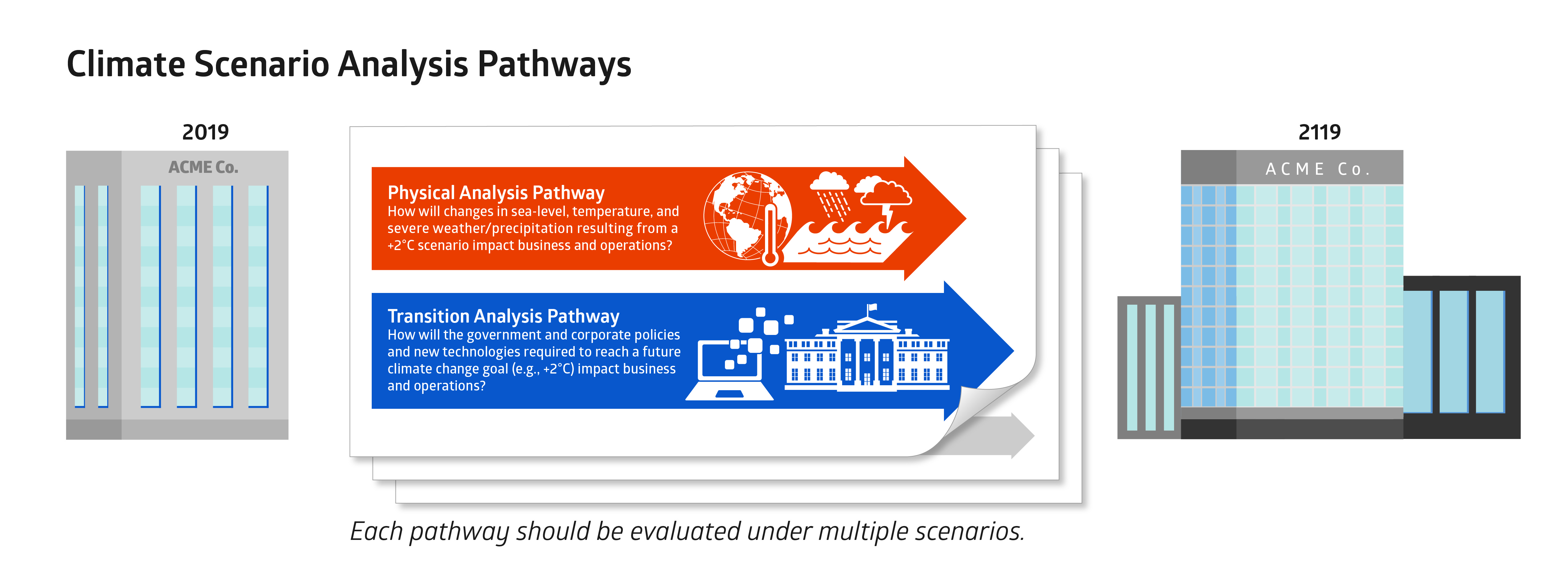In recent years, on the heels of ratification of the Paris Climate Agreement by numerous national and subnational governments as well as international finance, investment, and insurance entities, companies have been increasingly asked to evaluate the financial impact of a changing climate to their businesses. The tool that these companies use to meet shareholder expectations in evaluating climate risk is a concept called “climate scenario analysis.”
The financial industry formed the Task Force on Climate-related Financial Disclosures (TCFD) and published recommendations for how to use the climate scenario analysis and what components of evaluation should be included. The group’s technical report outlined industry best practices and served to provide a consistent protocol for companies to follow in order to respond to shareholder questions on climate change risk.
A climate scenario analysis should not be treated as a predictive exercise, forecasting a future climate state with a given statistical probability. Rather, a company’s analysis should be a planning tool to provide corporate decision makers and risk managers an opportunity to consider resiliency actions by evaluating a range of potential impacts due to a changing climate. A climate scenario analysis is performed along two parallel evaluation pathways: the physical pathway and the transition pathway.

The physical pathway helps a company understand how potential changes to the environment (such as the relative likelihood for increased flooding or drought over the next 100 years) will impact business. This pathway makes use of multiple datasets extracted from global climate models that can be applied to a company’s assets and/or supply chain around the world to pinpoint potential future climates and climate events at those locations.
The transition pathway guides a company in understanding how government or corporate policies and new technologies could be employed to achieve certain future benchmarks (like a large reduction in greenhouse gas emissions from the transportation sector). In this second pathway, most companies rely on scenarios defined by the International Energy Agency to perform their analyses.

Although a complicated task for companies that is typically handed off to the environmental or sustainability teams to manage, the climate scenario analysis has some valuable intrinsic benefits that arise simply by starting the process of evaluating climate risk. The process helps to identify risk and develop mitigation strategies, pushes the ball forward with respect to energy efficiency innovation, gives a greater degree of confidence to investors, and keeps a company’s adaptation plans grounded on the basis of a robust analysis.
